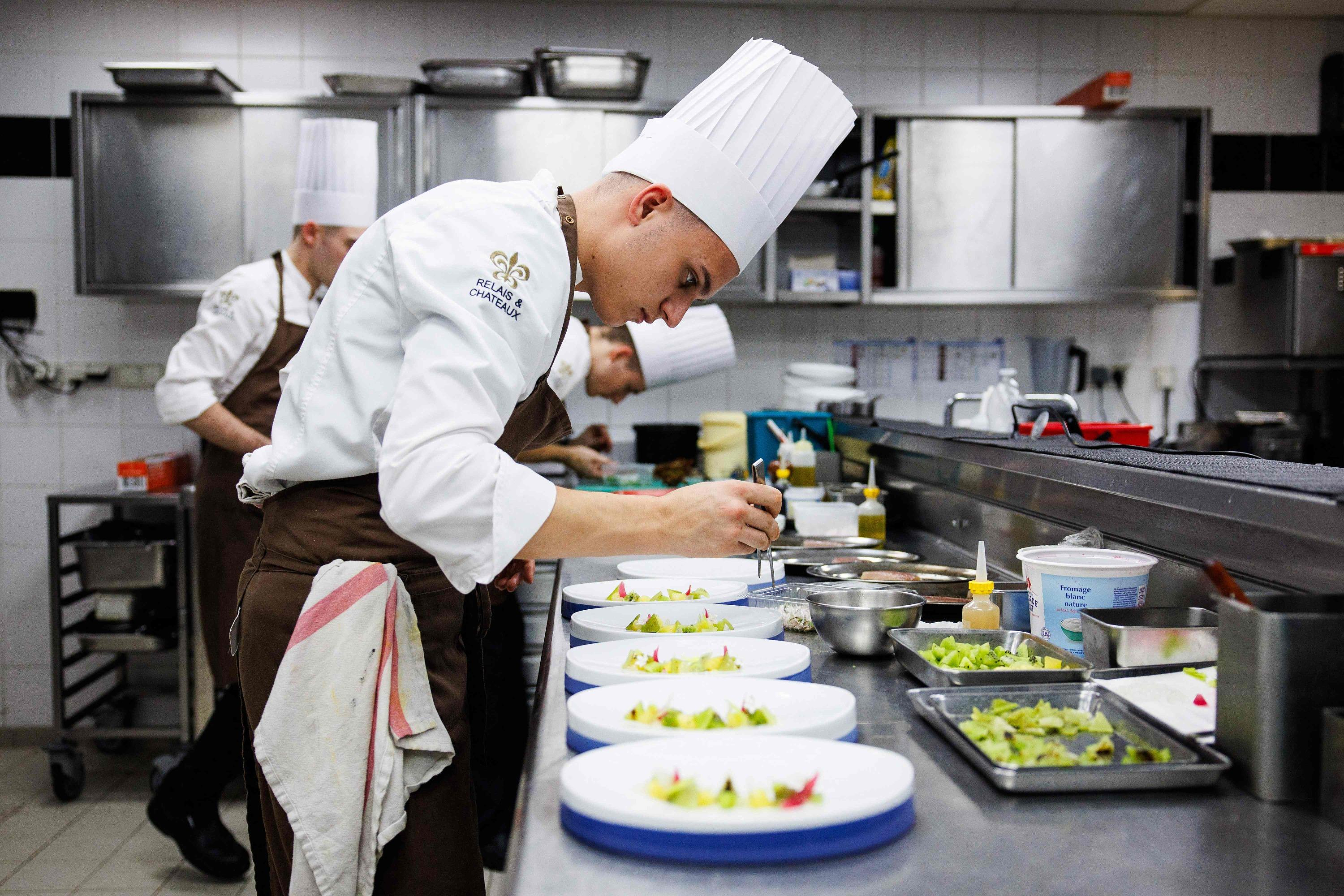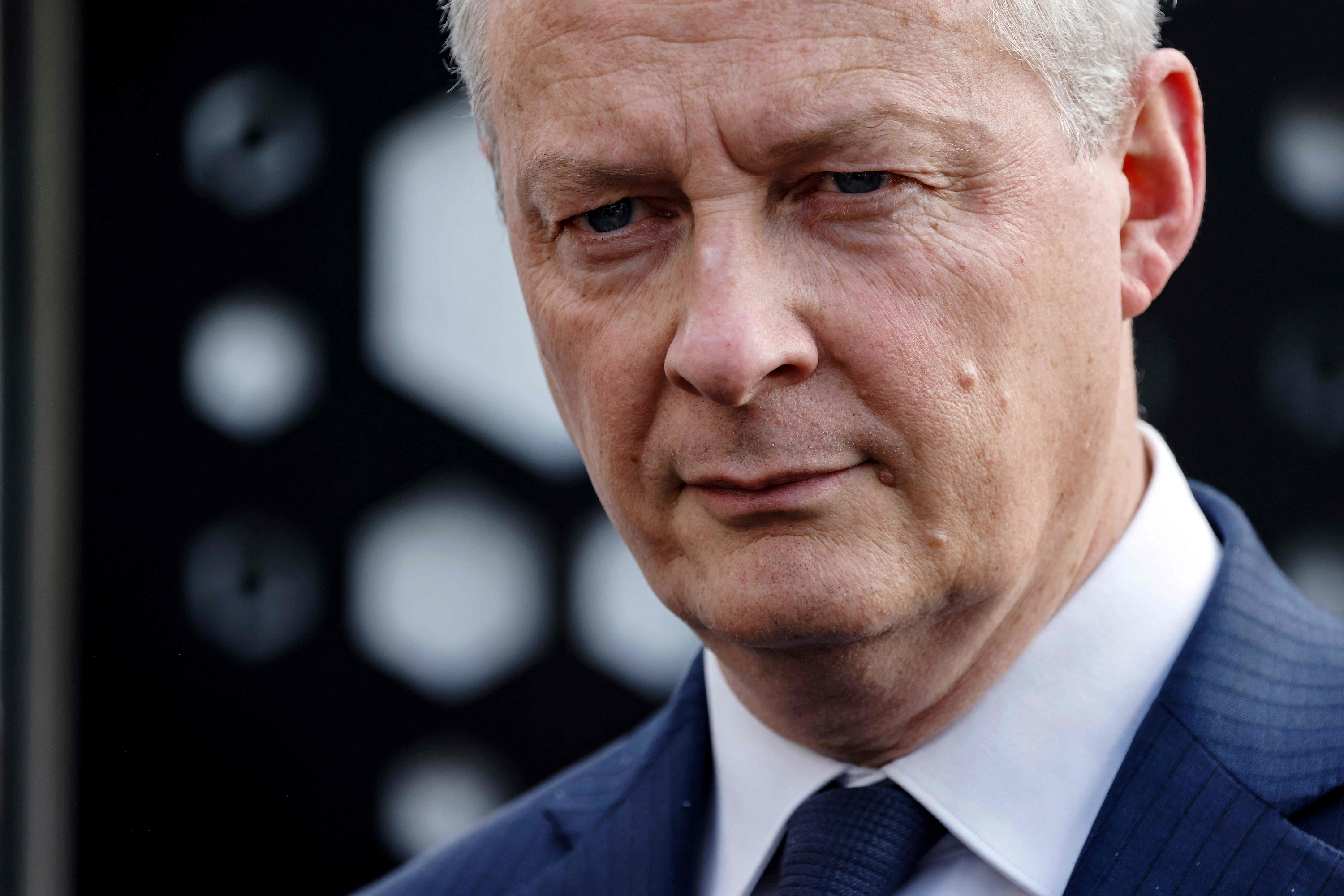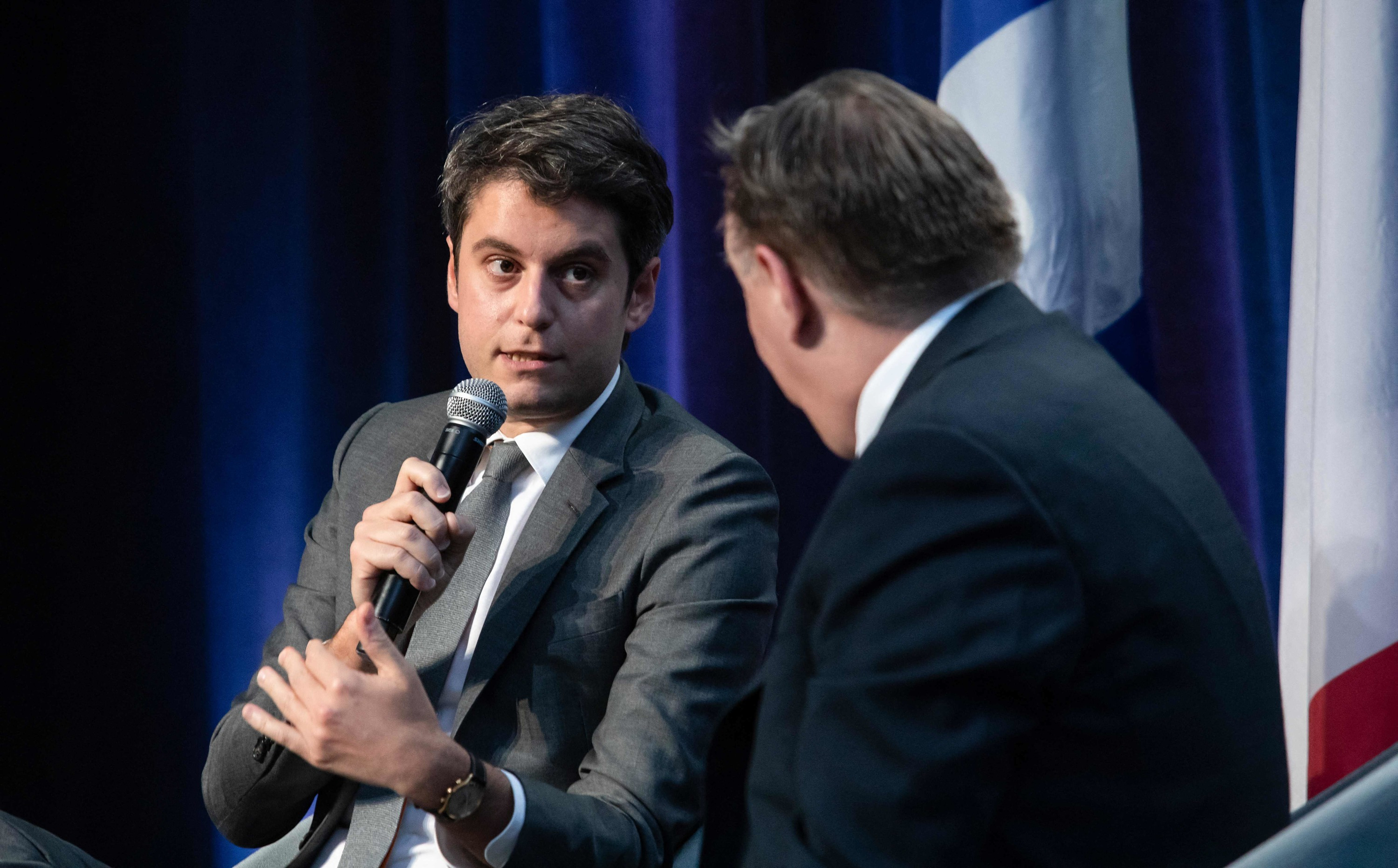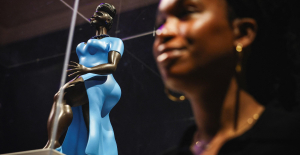Thousands of spectators crowd in several rows around the finishing channel to paradise, the finish line of the Ironman Hawaii. They scream, they clap the gang, they witness a historic moment: "Here he comes, the youngest Ironman world champion of all time," calls the moderator into his microphone - and then he appears: Gustav Iden, 26. With the With the Norwegian flag around his shoulders, he runs the last meters down the red carpet to the finish line and smashes Jan Frodeno's course record (7:51:13) in 7:40:24 hours.
"Phew, that was so damn hard," Iden said shortly afterwards, audible to all spectators over the boxes, when his teammate Kristian Blummenfelt was sitting on the ground, completely exhausted, and couldn't get up. "In the last few kilometers the myth kicked in, the island was trying to kill me, but my heart was stronger." Sam Laidlow, just 23 and the surprise second from France, sobs and says in a trembling voice: "It's been my dream since I was a am child Jan Frodeno in particular inspired me. ”The 41-year-old is only two meters away, while Blummenfelt is being carried away on a stretcher at this moment.
It's a memorable day in Hawaii. Iden, Laidlow (1:59 min.), Blummenfelt as third (2:59) and fourth Max Neumann (4:19) remain under Frodeno's record. Four wild youngsters, all under 30. The winning streak of the Germans in Hawaii is broken. And the man who started it in 2014 gave an emotional farewell at the same time: 15:15 minutes after the winner, Sebastian Kienle finished sixth and the best German. It's a bitter day for two-time champion Patrick Lange: After a time penalty on the bike, he ends up in tenth place, but still stays under eight hours (7:58:20). As in the women's race, more penalties were handed out than ever before. Most athletes? At a loss. Lange, however, pays respect to the fastest first. "Awesome performance from Sam, Gustav and Kristian," he says.
Flashback several hours earlier: The start of the great adventure begins in the dark with the way to the pier of Kailua-Kona. Crowds are on the move before the sun has made it's way up. Some in airy clothing and with coffee in hand, others in tight racing suits with the start number on the upper arm: As in the women's professional race on Thursday, around 2,500 age group athletes will start after the professionals.
When the sun appears on the horizon, it becomes clear that there was already a lot going on on Thursday, but now there is even more. The bay, Alii Drive beyond - thousands crowd here. Those who completed their race two days ago can now relax, watch and listen to the drummers starting to play.
The two big questions in the men's professional race: Can Norway's Kristian Blummenfelt live up to his role as the top favourite? Will the German winning streak last or break? Strictly speaking, it's already torn, because the exceptional athlete Blummenfelt won the World Cup edition, which was postponed from October 2021 in Kailua-Kona to May 2022 in Utah due to the pandemic. In the absence of the injured Patrick Lange and Jan Frodeno, the Norwegian would have been hard to beat.
However: It wasn't Hawaii. The World Cup streak is broken, but not that of Kailua-Kona. Anne Haug, who fought her way to third place on Thursday, believes Lange is capable of a lot. “He can definitely get on the podium. And I wouldn't begrudge him that," she said the morning after her race.
6.25 a.m .: Start of the men’s professional race. 27 degrees water temperature, the Pacific is calm. Perfect conditions for a fast 3.86 kilometers. The best swimming time in the history of the Ironman Hawaii was set by a German in 46:29 minutes in 2018: Jan Sibbersen. Now the Frenchman Sam Leidlow sets the pace. Two trains form: Laidlow on the one hand, the German Florian Angert on the other. Behind them the fight for the feet breaks out. Because what the wind is in cycling, the water shadow is here - not as energy-saving, but very helpful.
The starting situation is as follows: Blummenfelt is the man to beat. In the past 14 months he has unhinged the triathlon world. Olympic gold in Tokyo (1.5km - 40km - 10km), victory in the World Championships series over the same distance, impressive long-distance debut in November - and only nine months after Olympic gold, he celebrated victory at the Ironman World Championships in Utah .
Not even Jan Frodeno managed such a quick, successful switch from the Olympic to the long distance. He has to watch that day. After a wheel fall, his hip became inflamed, operations followed, and only now can he slowly get going again.
Blummenfelt's supposedly toughest competitors: teammate Gustav Iden and the Dane Magnus Ditlev (Winner von Roth). The Canadian Lionel Sanders is also to be expected, as well as a few other wild youngsters such as 23-year-old Laidlow.
And long? He had a difficult season that began in February with a wheel crash and subsequent shoulder surgery. On his comeback in Roth at the beginning of July, he ran in second place despite shoulder pain, after which he had to take a break again due to a corona infection. Nonetheless, the past few weeks have been good. "Mentally and physically," he said here three days ago, "I've never been so strong in Hawaii." And: "This race is everything I live for. That's why I get up in the morning for training. I was made for this race.”
The two trains with Laidlow and Angert have joined on the swim course. Lange also had a good start, swimming in the first large group in which Blummenfelt is also moving.
Angert already stood out in Utah as the best German with fifth place. The 30-year-old comes from swimming, trained up to ten times a week until he graduated from high school and celebrated German championship titles over 200, 400 and 1500 meters freestyle. Three other Germans are there: Andreas Dreitz, who had a serious crash in Utah at 85 km/h through no fault of his own and is competing here with a wildcard. Sebastian Kienle and Maurice Clavel, like the other two, also a strong cyclist.
After the dramatic fall at the Ironman World Championships in Utah, Andreas Dreitz had to worry about his career. The triathlon professional is all the more pleased to be able to take part in the Ironman in Hawaii again.
Source: WORLD / Melanie Haack
Now the first age group starters are in the water. Including a number of Germans, who are the second strongest nation here in Hawaii after the Americans. One of them: Martin Schefter, 57, from Bonn, whose son Mark also qualified and completed his race on Thursday (9:51:25 hours). Family business. Or Fabian Lotter, 32, who was hit by a car while training six years ago and was seriously injured: traumatic brain injury, he fell into the Kona. Now he swims at the place of longing of all triathletes.
Angert shows a strong race at the front and is leading the large group at half time. On the way back to the pier, Lange has to fight, loses contact with the first group, no feet, no suction to help him - he swims alone between one group and the other. Then the second group swallows him.
After 48:15 minutes, Angert was the first to emerge from the water at the same time as Laidlow. The group at the front is larger than ever: 19 athletes run to the transition area at short intervals, including Blummenfelt and Iden. Lange remains in the second group, comes ashore 1:27 minutes behind, closely followed by Clavel and Ditlev. Dreitz leads the third group out of the water in 33rd place, 3:23 minutes behind. Two greats of the scene have a more difficult start to the day: Kienle and Sanders fight their way out of the water after 52:58 minutes.
That Lange missed the first group? Not optimal, because the athletes at the top will keep the pace extremely high. On the other hand: He is surrounded by strong cyclists. After the first act, the chance to go onto the running track not too far behind and then to play to one's strength there is still there.
Part two of the torment in paradise begins: 180 kilometers on the bike. The course record is held by the Australian Camerontron with 4:09:06 hours. Laidlow and the Australian Max Neumann are now able to break away at the front, the chasing group, just under a minute behind, leads Angert after 15 kilometers, Lange is behind in another group. Whereby a group does not mean a crowd, because there is a slipstream ban here.
A distance of twelve meters or six bike lengths must be maintained. However, this also saves energy for the person behind, as Dreitz explained before the start: “We have the twelve meter slipstream rule, but the bikes are now so fast that you still have a big advantage within these twelve meters as the next driver. And so the differences become blurred. So the crucial question is: am I getting away or not?”
Things are not going well for him. Dreitz lost a bit by 40km, is almost five minutes behind, Kienle has passed him and seems to have good legs - in contrast to Sanders, who cannot keep up with the German Hawaii champion of 2014. At the front, Angert continues to put in a very good race. Until he has to stop.
It happens between kilometers 50 and 60. Angert starts to overtake within the chasing group, passes Frenchman Clément Mignon, then cuts back into a fairly large gap, then backs out again to pass Jesper Svensson of Sweden. But the referee on the motorcycle decides: blue card.
Anger is stunned. Five minutes forced break in the penalty tent, where shortly afterwards he is joined by three other pros. The referees are cracking down this year. Co-favorite Laura Philipp also received a time penalty on Thursday, for which she still has no explanation. Disregarded slipstream ban, it will have been. She can't understand it. Like Anger.
The 30-year-old is now forced to a standstill. And is at a loss. "I have no idea what I did wrong," he told a reporter from the organizer. "The gap was 30 meters long, I guess, so actually big enough to keep the distance. I got in, got closer to the man in front and overtook again. It was the same referee as Laura.” The rules also say about the overtaking process: The athlete has 25 seconds to do so. Anyone who is overtaken may not counterattack immediately, but only when they are twelve meters behind. He is also not allowed to stay in the slipstream box of those twelve meters.
Subsequent objection? Doesn't change the results. This is where facts are created that an athlete has to deal with. The problem: The referees decide by eye, there is no measurement, no video evidence or the like.
Angert can pedal again, but the good position is gone. And then, around kilometer 70, Lange got caught too. A debacle for the German athletes. Coach Björn Geesmann does not know exactly what happened at Lange. He smashed his notes into the lava world out of sheer frustration. Later at the finish, Lange will say: "Personally, I can't explain my time penalty, I have nothing to blame myself for." He joins a whole range of athletes that day.
The seventh victory in a row for a German athlete is a long way off. At kilometer 125 the following picture emerges: Laidlow is ahead of the field by almost a minute, behind them the Scandinavians have positioned themselves. Iden, Blummenfelt, Ditlev form the first chasing group with Neumann.
But there are also positive things from a German point of view: Kienle shows a strong bike part in his farewell race in Hawaii, just like Dreitz and Clavel now. They ride in a group of five about 6:20 behind the leaders. Angert, actually also a good cyclist, is almost nine minutes behind. The time penalty seems to have left its mark on the Hawaii debutant. And Lange: 12:19 minutes back.
Is there anything else possible? The word "difficult" should only apply to the beginning. Because up front, Laidlow in particular makes a lot of speed. The 23-year-old is having the race of his life and is the first to enter the transition area with a large lead. 4:04:36 minutes - what a time! He stole the record from Cameron Wurf.
His cushion on Iden, Blummenfelt and Neumann: 6:15 minutes. Ditlev had also caught it in the meantime: five minutes penalty. There have never been so many blue cards in a World Championship race (including the women).
As the best German, Sebastian Kienle rushes to eighth place after Laidlow in the direction of the pier to park the bike and put on the running shoes. Angert finishes the 180 kilometers 13:05 behind, a good 18 minutes behind.
A lot can happen in Hawaii - history has shown that. Athletes broke in, had to walk, got cramps, had to take a toll on heat and pace. Unforgettable are the images of Juli Moss (1982) crawling to the finish line and the fight for fourth and fifth place between Wendy Ingraham and Sian Welch (1997), fought on all fours. And after all, Lange made his Hawaii debut in 2016 from far behind on the podium. But that is not realistic today.
So the question is, can Laidlow pull this off? When will the Norwegians come and how close?
At kilometer 15 they are only 3:38 minutes behind, a little more than halfway through the marathon 3:05. Step by step they get closer, Iden looks much better, more relaxed than Blummenfelt. And then he pulls away from him. Just before the 30 kilometer mark.
Five kilometers further, Laidlow can feel Iden's breath on his neck - the Norwegian rushes past, unstoppable, at a pace that no athlete has ever conjured up on the hot asphalt of Kailua-Kona. Laidlow loses meters step by step. Not because he's slow, but because Iden runs in other realms. Just like the Frenchman delivered a top-class bike race before. With two kilometers to go, he still has a one-minute lead over Blummenfelt - not feasible even for the top favorite.
In the end, even fourth-placed Max Neumann was still below Frodeno's old record in 7:44:44 hours. What a race, what great times. Then Kienle lets himself be celebrated by the audience, takes his wife and his 14-month-old son in his arms behind the finish line and then returns to the fans. Lange is also celebrated - by the moderator at the finish, the spectators and his wife. He thanks you with gestures and a smile. Even if the day went very differently than expected.
At least the 36-year-old still finds something positive: "I'm proud that I got the best out of the situation, I owed that to my team after a tough year," he says. "From the time penalty it was all a struggle with leg cramps and an incredibly tough marathon that I've never experienced before." But he'll be back. The times at the top didn't shock him. "I'll be back and I'll be stronger," he says. "I will bring exciting races to the sport for many years to come." Also in Hawaii.
And ideas? "I'm not sure if I'll compete here again," says the Norwegian, laughing. "It was too hot, too hard. So brutal."

 Sudan ravaged by a year of war
Sudan ravaged by a year of war Ten years after the kidnapping of the Chibok girls, what has become of the terrorist group Boko Haram?
Ten years after the kidnapping of the Chibok girls, what has become of the terrorist group Boko Haram? The Israeli government divided on the extent of its response after Iran's direct attack on its territory
The Israeli government divided on the extent of its response after Iran's direct attack on its territory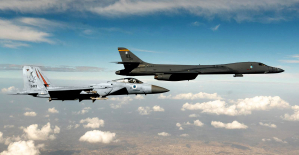 “Is it time for a killing blow?” : the Israeli press wonders about a response after the Iranian attack
“Is it time for a killing blow?” : the Israeli press wonders about a response after the Iranian attack Covid-19: everything you need to know about the new vaccination campaign which is starting
Covid-19: everything you need to know about the new vaccination campaign which is starting The best laptops of the moment boast artificial intelligence
The best laptops of the moment boast artificial intelligence Amazon invests 700 million in robotizing its warehouses in Europe
Amazon invests 700 million in robotizing its warehouses in Europe Inflation rises to 3.2% in March due to gasoline and electricity bills
Inflation rises to 3.2% in March due to gasoline and electricity bills Large French companies are alarmed by the stalling of the European economy
Large French companies are alarmed by the stalling of the European economy New sanctions against Russia send industrial metal prices soaring
New sanctions against Russia send industrial metal prices soaring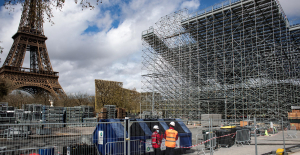 Olympic Games 2024: civil servants authorized to carry out private security activities
Olympic Games 2024: civil servants authorized to carry out private security activities Threat of strikes for the 2024 Olympics: Macron says he has “confidence” in the “spirit of responsibility” of the unions
Threat of strikes for the 2024 Olympics: Macron says he has “confidence” in the “spirit of responsibility” of the unions Musical show: “Come Bach”, fantasies around the composer
Musical show: “Come Bach”, fantasies around the composer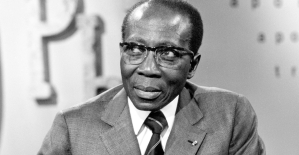 The cry of alarm from Senghor's friends has been heard
The cry of alarm from Senghor's friends has been heard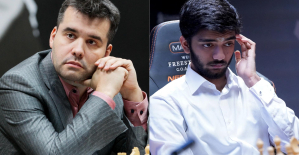 World Chess Championship: Nepomniachtchi and Gukesh lead the candidates tournament
World Chess Championship: Nepomniachtchi and Gukesh lead the candidates tournament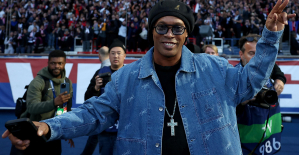 Rapper Heuss L’Enfoiré calls on Ronaldinho for his new music video
Rapper Heuss L’Enfoiré calls on Ronaldinho for his new music video Skoda Kodiaq 2024: a 'beast' plug-in hybrid SUV
Skoda Kodiaq 2024: a 'beast' plug-in hybrid SUV Tesla launches a new Model Y with 600 km of autonomy at a "more accessible price"
Tesla launches a new Model Y with 600 km of autonomy at a "more accessible price" The 10 best-selling cars in March 2024 in Spain: sales fall due to Easter
The 10 best-selling cars in March 2024 in Spain: sales fall due to Easter A private jet company buys more than 100 flying cars
A private jet company buys more than 100 flying cars This is how housing prices have changed in Spain in the last decade
This is how housing prices have changed in Spain in the last decade The home mortgage firm drops 10% in January and interest soars to 3.46%
The home mortgage firm drops 10% in January and interest soars to 3.46% The jewel of the Rocío de Nagüeles urbanization: a dream villa in Marbella
The jewel of the Rocío de Nagüeles urbanization: a dream villa in Marbella Rental prices grow by 7.3% in February: where does it go up and where does it go down?
Rental prices grow by 7.3% in February: where does it go up and where does it go down? Europeans: the schedule of debates to follow between now and June 9
Europeans: the schedule of debates to follow between now and June 9 Europeans: “In France, there is a left and there is a right,” assures Bellamy
Europeans: “In France, there is a left and there is a right,” assures Bellamy During the night of the economy, the right points out the budgetary flaws of the macronie
During the night of the economy, the right points out the budgetary flaws of the macronie Europeans: Glucksmann denounces “Emmanuel Macron’s failure” in the face of Bardella’s success
Europeans: Glucksmann denounces “Emmanuel Macron’s failure” in the face of Bardella’s success These French cities that will boycott the World Cup in Qatar
These French cities that will boycott the World Cup in Qatar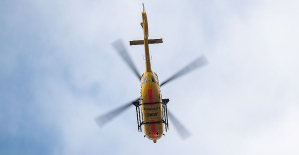 Augusta Masters: the unchallenged reign of Scottie Scheffler
Augusta Masters: the unchallenged reign of Scottie Scheffler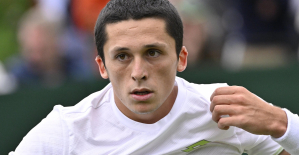 Tennis: Harold Mayot takes Cachin and goes to the second round in Barcelona
Tennis: Harold Mayot takes Cachin and goes to the second round in Barcelona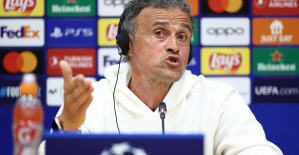 Barça-PSG: “We will do it”, Luis Enrique shows his confidence before the return match
Barça-PSG: “We will do it”, Luis Enrique shows his confidence before the return match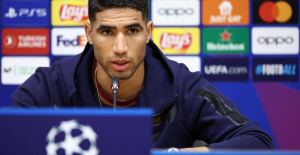 Hakimi on Mbappé before Barça-PSG: “I feel very good, very motivated, like the whole team”
Hakimi on Mbappé before Barça-PSG: “I feel very good, very motivated, like the whole team”





